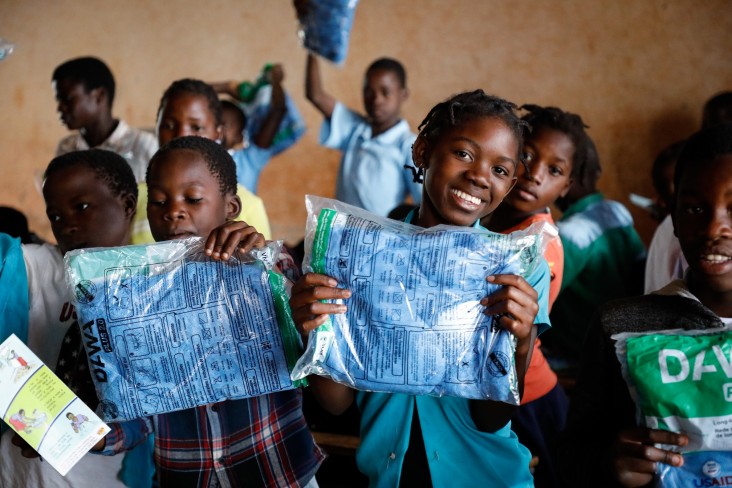Speeches Shim

Ministry of Health P.S. Technical Services Kennedy Malama
National Malaria Elimination Center Director Mutinta Mudenda
PATH Regional Director Nanthalie Mugala
Ladies and gentlemen
All protocols observed
On behalf of the United States Agency for International Development, it is my pleasure to join you for the Program for the Advancement of Malaria Outcomes (PAMO’s) end-of-project event. I want to begin by acknowledging the project team for their hard work and commitment over the past five years.
Preventing, controlling, and treating malaria is a priority under the U.S. government’s foreign assistance strategy. In 2005, the President’s Malaria Initiative (PMI) was launched to reduce malaria-related mortality across Southern Africa. Led by USAID, and implemented together with the Centers for Disease Control and Prevention (CDC), PMI scales up proven, cost-effective malaria prevention and treatment interventions. Focus interventions include distribution of insecticide-treated nets, indoor residual spraying, prompt diagnosis and treatment, and intermittent preventive treatment of pregnant women.
Here in Zambia, PMI has provided direct malaria assistance since 2007. In 2015, we began partnering with PAMO to provide significant and sustained malaria support to the Ministry of Health, the National Malaria Elimination Center (NMEC), for the National Malaria Elimination Strategic Plan to accelerate the government’s efforts to ensure high coverage of evidence-based interventions to combat malaria.
We commend PAMO’s many successes in scaling up proven malaria interventions, building capacity to deliver malaria interventions, and strengthening health information systems in the four target provinces of Luapula, Muchinga, Northern and Eastern. Over the past five years, PAMO has implemented interventions to reduce malaria mortality by half. The project has also contributed to a reduction in incidence rates for children under five, one of the most at risk groups, from 876 to 767 per 1,000 population. Additionally, PAMO has increased the long term sustainability and accessibility of malaria services by training over 3,000 community health workers and 300 supervisors in integrated community case management of malaria. I am proud to share that as a result of PAMO’s community health worker trainings, twelve districts in PMI focus provinces have now achieved the national saturation target of one community health worker per 750 population. This incredible achievement will significantly increase accessibility and uptake of malaria services.
Together with the NMEC, PAMO has increased insecticide-treated bed net coverage, from the national average of 79% in 2015, to a PMI focal province average of 93% in 2018. PAMO has also supported training and mentorship of district and facility health care workers to increase completeness, accuracy, and timelines of data reporting. In PMI focal provinces, 100% of facilities now report complete data as compared to 89% in 2017, which is important to having a stronger surveillance system as the country moves towards pre-elimination.
PAMO has worked with the NMEC to create and institutionalize a harmonized workplan and malaria scorecard to ensure coordinated implementation and real-time tracking of progress at all levels. The scorecard is now used monthly by the NMEC and weekly by provincial and district health offices to assess targets, troubleshoot issues and resolve implementation challenges. In 2016, only 36% of planned activities of the National Malaria Strategic Plan were implemented. Following the integration of the annual work plan into the malaria scorecard in 2019, 86% of activities were implemented.
In 2018, PAMO started supporting pre-elimination activities in the three Eastern Province districts of Chadiza, Katete, and Sinda, contributing to an overall drop in confirmed malaria incidence in children under five years, from 308 per 1,000 in 2015 to 235 in 2020.
As we reflect on the many achievements over the past five years, we also know that our work to achieve malaria elimination is not yet done. Recent trends in malaria incidence and mortality challenge us to work even harder to increase our efforts in malaria prevention and treatment. I am also thrilled to announce that Path has just been awarded a new five-year award, known as PAMO Plus, that will build on the demonstrated successes and the strong partnerships of the past five years to continue to implement evidence-based interventions.
We look forward to the next leg of our journey together and we congratulate PAMO, once again, for their achievements over the past five years.
READ MORE
Related Speeches
- USAID Acting Administrator Barsa Remarks at American Enterprise Institute on the Over-the-Horizon Strategic Review
- Remarks by Ms. Hanh Nguyen, Deputy Mission Director USAID/Cambodia, Health Professional Councils’ Strategic Planning Orientation Workshop
- Remarks by John Eyres, Director, Office of Public Health and Education, USAID/Cambodia, Dissemination Workshop of the Fifth National Strategic Plan for a Comprehensive & Multi-sectoral Response to HIV & AIDS in Cambodia

Comment
Make a general inquiry or suggest an improvement.